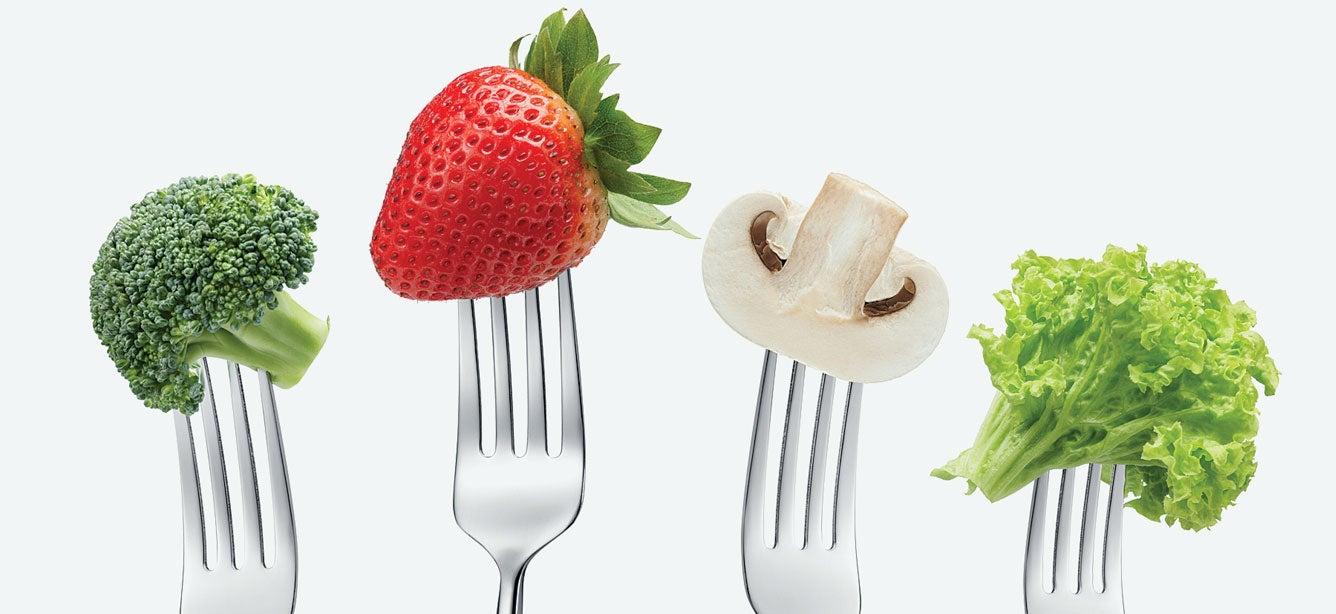
Related Topics
The Supplemental Nutrition Assistance Program (SNAP) empowers millions of older Americans to eat healthier—which in turn helps them feel better, prevent chronic disease, and stay independent for longer. Beyond these good-health perks, SNAP makes financial—check out these four surprising beneifts.
1. The Supplemental Nutrition Assistance Program (SNAP) helps you save money and stretch your budget.
Living on a tight fixed income can be stressful. You may feel anxious on a regular basis, wondering if you’ll have enough each month to cover your expenses. By supplementing your income, monthly SNAP benefits allow you to spend less of your own money on groceries. These savings can then be reallocated to other essential living expenses—such as rent, mortgage, utility bills, vehicle and household repairs, and more.
The average SNAP benefit for an older adult living alone is currently $188 per month.1 However, even if you qualify for only the minimum monthly program benefit of $20, that’s still extra money in your pocket. Every dollar of SNAP assistance can help you afford healthier food and put a bit of additional wiggle room in your budget.
Qualifying for SNAP can also automatically qualify you for other government benefit programs. These include the Low Income Home Energy Assistance Program (LIHEAP) and the Lifeline program, which offers no-cost cell phones to older adults in need.
BenefitsCheckUp, NCOA's free benefits search tool, connects you with more than 2,500 benefit programs (including SNAP) that can help you save money on food, utilities, taxes, healthcare, and more. Visit BenefitsCheckUp.org and enter your ZIP code to see which programs you qualify for.
2. SNAP helps boost the local and national economy.
SNAP accounts for roughly 8% of the food American families buy for their households2 and generates revenue for businesses of all sizes. People purchase groceries with their SNAP benefits at about 248,000 retailers across the country, from superstores like Walmart to small "mom and pop" shops. While many of these businesses are large retail chains, approximately 80% of SNAP retailers are small establishments such as convenience stores and bakeries. These stores are often locally owned, which pumps money back into the local economy. SNAP is also widely accepted at farmers markets and farm stands, which helps support local agriculture.
Another way in which SNAP helps the economy is by increasing spending power for beneficiary households. This expands the economic benefit beyond food retailers to include retailers that sell non-food items.
3. SNAP makes it easier to afford healthy food.
Adults aged 60 and older have unique nutrition needs. The latest federal guidance recommends eating a variety of foods to ward off chronic diseases and promote healthy aging—including fruits and vegetables. The problem for people on a limited income is that fresh produce is expensive. And with grocery prices on the rise everywhere, fruits and vegetables become even more cost prohibitive.
The monthly funds provided by SNAP can help soften the blow of skyrocketing food costs. With a little extra in your budget, you can buy fewer packaged and processed foods and more healthy, wholesome fare. What can SNAP benefits be used for? You can use your SNAP electronic bank transfer (EBT) card at grocery and other stores to buy nourishing staples such as:
- Fruits and vegetables (fresh, frozen, or canned)
- Meat, poultry, and fish (fresh, frozen, or canned)
- Dairy (fresh or shelf-stable)
- Bread and cereal
Since many farmers markets accept SNAP, too, you’ll also have access to farm-fresh food you might not otherwise have been able to afford. Jackie Smith, age 64, recently expressed to us how grateful she is for SNAP assistance.
When asked how SNAP helps her, Smith said: "Food! I really need it. I buy vegetables so I can eat healthily. Spaghetti, meatloaf, lima beans… I love to cook."
4. SNAP lowers healthcare costs—which benefits all of us.
High healthcare costs affect everyone, especially people with low incomes. One culprit behind these high costs is poor nutrition. Unhealthy diets are responsible for nearly 20% of U.S. healthcare expenditures stemming from chronic conditions like heart disease and diabetes. This translates to approximately $50 billion each year.3
Older adults with SNAP, however, are more likely to eat a well-balanced, nourishing diet that keeps them in good health. Additionally, people with SNAP may be more inclined to visit the doctor when they need to—since they have more money to spend on out-of-pocket healthcare costs (e.g., deductibles and coinsurance). It’s no surprise, then, that SNAP enrollment has been associated with fewer emergency room visits, hospital stays, and long-term care admissions.4
Another important way in which SNAP affects healthcare costs is reducing medication nonadherence by making prescription medications more affordable. One study showed that SNAP participants were 5.3% less likely to skip or stop medications, delay refills, and take smaller doses due to cost.5 Higher rates of medication adherence lower healthcare costs by reducing hospitalizations and emergency department use, particularly for older adults with chronic disease.6
Exactly how much does SNAP impact the costs of healthcare? One study showed that older adults with SNAP incur $1,400 (nearly 25%) less in annual medical care costs compared to adults without it.7 A North Carolina study found that the better healthcare outcomes resulting from SNAP translated into an estimated $2,360 reduction in Medicaid spending per person annually.4
How to get started: The first step to SNAP savings is to apply
SNAP food assistance is available to all older adults who meet its eligibility requirements, including income limits. A variety of deductions can help you meet SNAP income limits—so even if you don’t think you qualify, it’s worth knowing for sure. Plus, applying for SNAP is surprisingly straightforward. And, if you need help, you’ll be able to have someone walk you through the process. Use BenefitsCheckUp to find SNAP eligibility criteria and how to apply for SNAP in your state.
Sources
1. USDA. Characteristics of Supplemental Nutrition Assistance Program Households: Fiscal Year 2023. April 2025. Found on the internet at https://fns-prod.azureedge.us/sites/default/files/resource-files/snap-FY23-Characteristics-Report.pdf
2. Center on Budget and Policy Priorities. SNAP Boosts Retailers and Local Economies. 2020. Found on the internet at https://www.cbpp.org/research/food-assistance/snap-boosts-retailers-and-local-economies#:~:text=By%20providing%20more%20resources%20for,SNAP%20helps%20local%20economies.
3. Brigham and Women's Hospital. Healthy Diet Could Save $50B in Health Care Costs. 2019. Found on the internet at https://www.brighamandwomens.org/about-bwh/newsroom/press-releases-detail?id=3517
4. Benefits Data Trust. Building Healthier Lives Through Increase SNAP Participation. December 2021. Found on the internet at https://bdtrust.org/berkowitz-fact-sheet-121721.pdf
5. Jennifer A. Pooler and Mithuna Srinvasan. Association Between Supplemental Nutrition Assistance Program Participation and Cost-Related Medication Nonadherence Among Older Adults With Diabetes. JAMA Internal Medicine. January 2019. Found on the internet at https://jamanetwork.com/journals/jamainternalmedicine/fullarticle/2715159
6. M. Christopher Roebuck, et. al. Medication adherence leads to lower health care use and costs despite increased drug spending. Health Affairs. January 2011. Found on the internet at https://pubmed.ncbi.nlm.nih.gov/21209444/
7. Seth A. Berkowitz, et al. Supplemental Nutrition Assistance Program (SNAP) Participation and Health Care Expenditures Among Low-Income Adults. JAMA Internal Medicine. November 2017. Found on the internet at https://www.ncbi.nlm.nih.gov/pmc/articles/PMC5710268/#:~:text=Findings,by%20approximately%20%241400%




